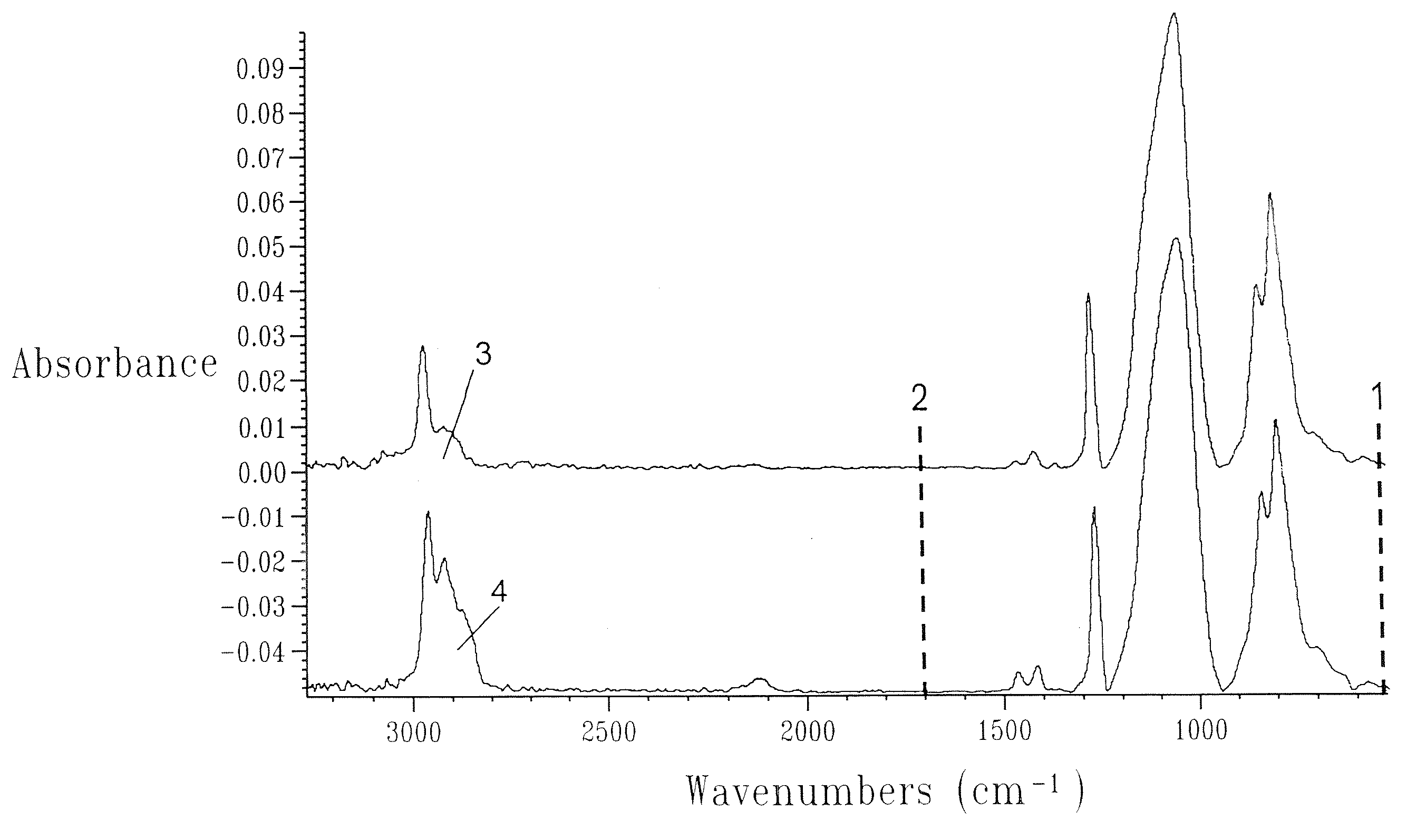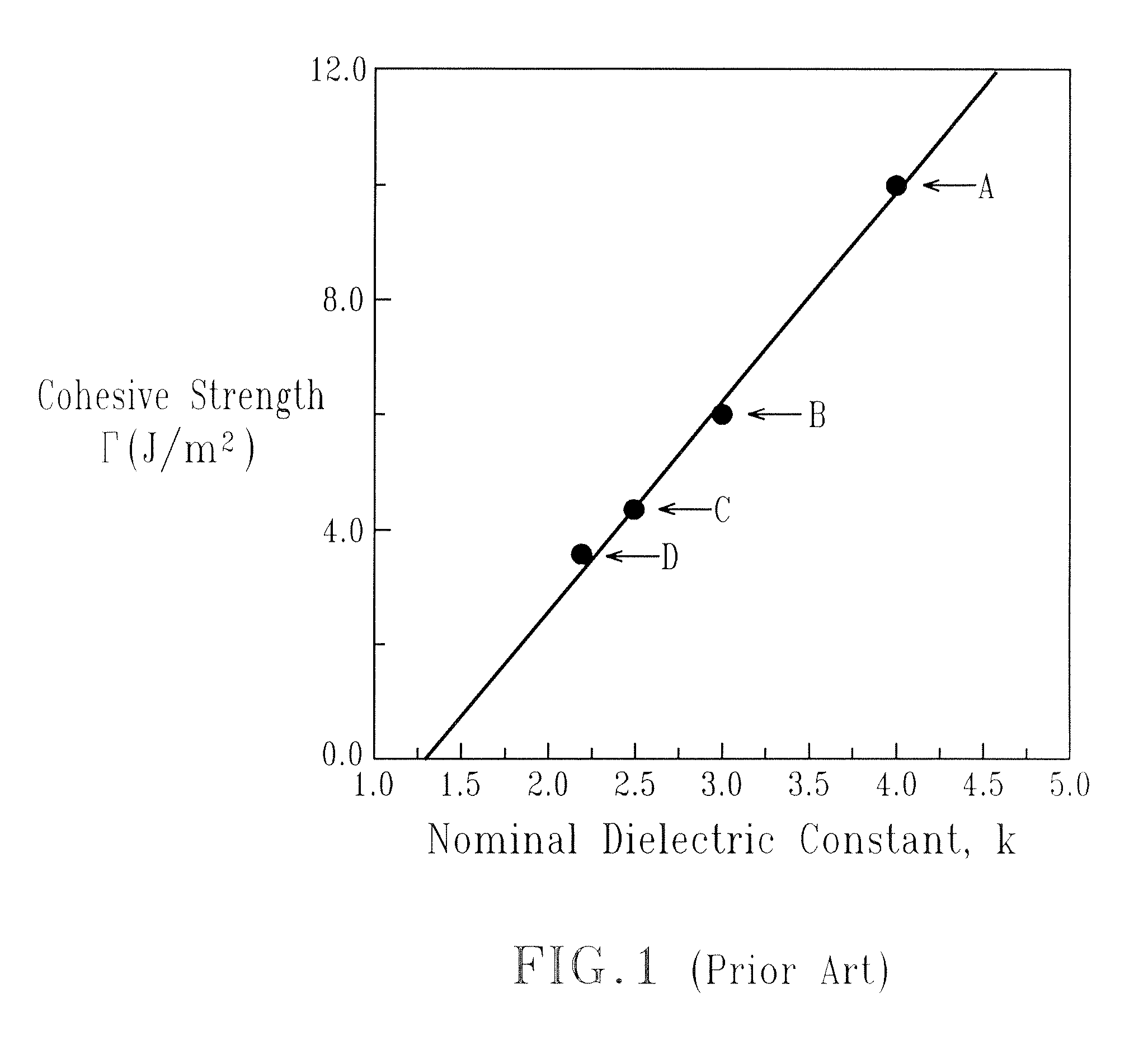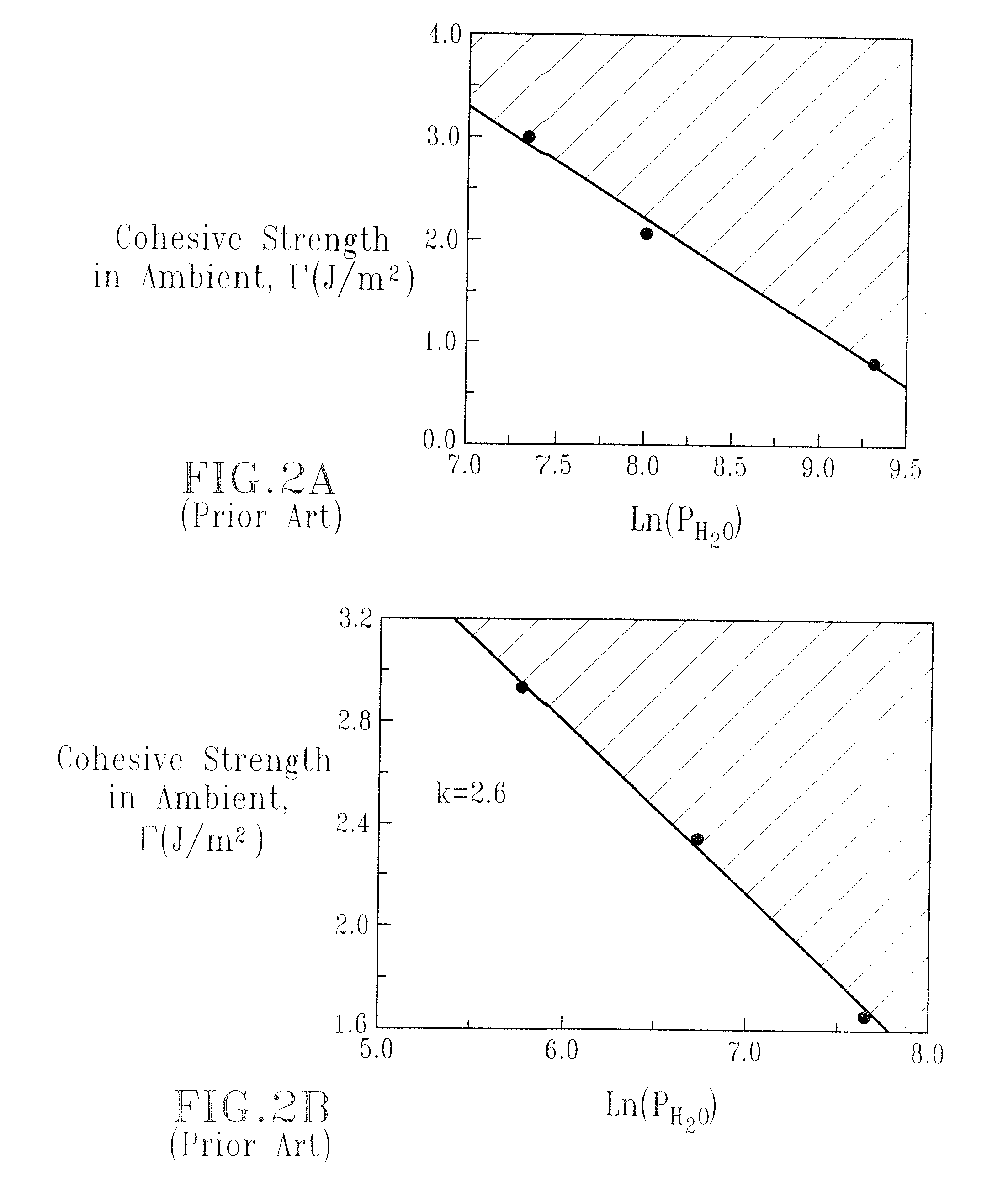Methods to form SiCOH or SiCNH dielectrics and structures including the same
a technology of sicoh or sicnh dielectrics, applied in the direction of coatings, metallic material coating processes, chemical vapor deposition coatings, etc., can solve the problems of not allowing the concentration of desired si—c bonds to be adjusted or controlled in the skeleton of the porous sicoh film, and the high cost of the improved porous sicoh dielectrics, etc., to achieve the effect of low cost and simple method
- Summary
- Abstract
- Description
- Claims
- Application Information
AI Technical Summary
Benefits of technology
Problems solved by technology
Method used
Image
Examples
example 1
First Method Embodiment
[0086]In this example, a porous SiCOH material with a dielectric constant k=2.4 was made in a two step process. In the deposition step, one cyclic carbosilane or oxycarbosilane precursor was selected to have a low boiling point, low cost, and to provide bonding of the form Si—[CH2]n—Si. Specifically, 1,1-dimethyl-1-silacyclopentane was used. The conditions used in the deposition step included a precursor flow of 8 sccm for the carbosilane 1,1-dimethyl-1-silacyclopentane, and 0.5 sccm for oxygen (O2). The substrate was placed in the reactor and the precursor's flows were stabilized to reach a reactor pressure of 0.5 Torr. The wafer chuck temperature was set to about 180° C. RF power at 13.6 MHz frequency was applied at a power of 30 W. After deposition, the film was annealed at 4300 for 4 hours, and a dielectric constant of 2.4 was measured at 150° C. Generally, other energetic post treatments may be used at this step, within the invention. In this embodiment, ...
example 2
Second Method Embodiment
[0091]In this example, a porous SiCOH material with k=2.4 was made in a two step process. In the deposition step, two precursors were used. The cyclic precursor was selected to have a low boiling point, low cost, and to provide bonding of the form Si—[CH2]n—Si. The cyclic carbosilane precursor employed was 1,1-dimethyl-1-silacyclopentane. Bicycloheptadiene (BCHD) was used as a second precursor and serves as a porogen in this method. The conditions used in the deposition step included a precursor flow of 5 sccm for 1,1-dimethyl-1-silacyclopentane, and 2 sccm for the BCHD, and 0.5 sccm for oxygen (O2). The substrate was placed in the reactor and the precursor's flows were stabilized to reach a reactor pressure of 0.5 Torr. The wafer chuck temperature was set to about 180° C. RF power at 13.6 MHz frequency was applied at a power of 50 W. After deposition, the film was annealed at 430° C. for 4 hours, and the FTIR data of FIG. 5 were collected, and the dielectric...
example 3
Third Method Embodiment
[0093]In this example, a porous SiCOH material, with k greater than or equal to 1.8, and having enhanced Si—R—Si bridging carbon or other organic functions bridging between two Si atoms was made using three precursors in a two step process. Here, R is used to represent bridging organic groups such as CH2, CH2—CH2, CH2—CH2—CH2 and more generally [CH2]n. In the deposition step, three precursors are used with one of these being a hydrocarbon porogen (used according to methods known in the art). The porogen may be bicycloheptadiene (BCHD), hexadiene (HXD), or other molecules described, for example, in U.S. Pat. Nos. 6,147,009, 6,312,793, 6,441,491, 6,437,443, 6,441,491, 6,541,398, 6,479,110 B2, and 6,497,963. Another one of the precursors used in this example was a SiCOH skeleton precursor DEMS (diethoxymethylsilane). The third precursor, which was selected to provide a desired amount of bonding of the form Si—[CH2]n—Si, was 1,1-dimethyl-1-silacyclopentane, althou...
PUM
| Property | Measurement | Unit |
|---|---|---|
| dielectric constant | aaaaa | aaaaa |
| dielectric constant | aaaaa | aaaaa |
| dielectric constant | aaaaa | aaaaa |
Abstract
Description
Claims
Application Information
 Login to View More
Login to View More - R&D
- Intellectual Property
- Life Sciences
- Materials
- Tech Scout
- Unparalleled Data Quality
- Higher Quality Content
- 60% Fewer Hallucinations
Browse by: Latest US Patents, China's latest patents, Technical Efficacy Thesaurus, Application Domain, Technology Topic, Popular Technical Reports.
© 2025 PatSnap. All rights reserved.Legal|Privacy policy|Modern Slavery Act Transparency Statement|Sitemap|About US| Contact US: help@patsnap.com



